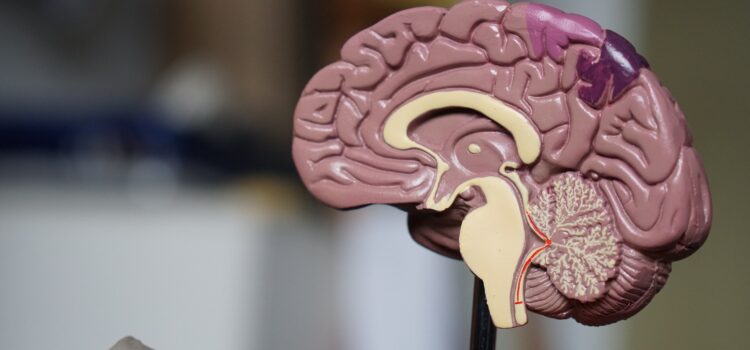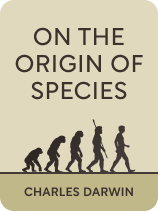

This article is an excerpt from the Shortform book guide to "On the Origin of Species" by Charles Darwin. Shortform has the world's best summaries and analyses of books you should be reading.
Like this article? Sign up for a free trial here.
How could something as complex as the human brain have evolved from a simpler structure? Does evolution naturally produce complexity?
When Charles Darwin published On the Origin of Species, some scientists brought up a challenge to his theory of evolution: Complex features are difficult (if not impossible) to create through small increments as Darwin had suggested. In the last edition of his book, Darwin responded.
Keep reading to learn about the evolution of complexity.
The Evolution of Complexity
Darwin explains that some naturalists found it difficult to believe that very sophisticated structures could arise through small increments. Organisms today have such highly developed structures and behaviors that it’s hard to imagine a rudimentary version of them providing much value.
For example, bats hunt using echolocation. They emit high-pitched sound waves that bounce off insects and then they judge the distance and direction of the prey by listening to the echo. They do this fast enough to intercept insects in flight. That means echolocation needs to work at a high level of sophistication if it’s to work at all. It’s hard to imagine a primitive bat just making noises and then trying to follow the direction of the echo.
Darwin provides two rebuttals to this argument and explains the evolution of complexity.
Rebuttal 1) Evolution Repurposes Older Structures
Darwin argues that highly sophisticated structures and instincts can evolve incrementally, but they’re often repurposed from earlier structures. An earlier version of a species may evolve a structure for one purpose. Then, the organism finds a new use that allows the structure to continue evolving into greater complexity and sophistication.
Let’s return to the echolocation example. To echolocate, bats need highly sensitive directional hearing and the ability to make high-frequency sounds. These could’ve developed independently of each other before being repurposed into an echolocation system.
Bats may have started off like other nocturnal predators, such as owls, that hunt using highly sensitive directional hearing. They may also have communicated with each other using ultra-high-frequency squeaks that predators can’t hear, as many small rodents do today. Once early bats derived even a small advantage from using these abilities together in echolocation, evolution could then incrementally improve on this new usage.
| The Mechanisms of Evolving Complex Organs Researchers have named the process of repurposing structures exaptation. However, exaptation is only one of several processes that enable complex organs to evolve. Evolutionary biologists have identified several more key mechanisms for evolving complex structures. Duplication creates copies of genes and repurposes them. A complex structure may begin as a crude copy of another structure before adapting to a new function. Scaffolding allows structures to support the development of other structures before losing their functions—much like the scaffold in a construction project. Gene sharing allows one set of genes to take on multiple functions. This increases the complexity and range of organic structures that can be supported by an organism’s genetic code. |
Rebuttal 2) The Natural World Shows Incremental Development of Complex Structures
Furthermore, Darwin argues that, when we look at simpler organisms, we often find earlier versions of rudimentary structures that developed into much more complex structures over time. For example, the human brain is so complex that scientists are still discovering how it works. However, by understanding that the brain is a centralized collection of nerve cells in communication with each other, we can find the simplest examples of this structure in nature to reveal how it may have developed over time.
One of the simplest nerve cell structures belongs to jellyfish, whose nerve cells connect in a “net” that senses and processes information. One step up from this we find hydras, small freshwater relatives of sea anemones. These creatures also have a nerve net, but their nerve cells are more specialized, giving them something closer to a brain. Finally, in flatworms, these specialized nerve cells cluster together, forming a simple brain that can make decisions and even remember previous actions. By looking at these simple organisms, we can infer the origins of something as complex as a human brain.
| Does Evolution Naturally Produce Complexity? Some evolutionary biologists have theorized that evolution has a natural tendency to produce greater complexity, even without natural selection. They make their argument mathematically: Mutation is random, and randomness increases complexity. Therefore, mutation trends toward complexity. For example, imagine a very simple organism that’s made up entirely of one kind of cell. Any mutation at all—whether beneficial, detrimental, or neutral—could result in the organism having at least two kinds of cells, and therefore becoming more complex. The more mutations occur, the greater the cell diversity and subsequent complexity. Thus, evolution inevitably leads to complexity. However, this theory remains controversial. Critics argue that organisms are always living under natural selection, and therefore it’s difficult to prove that this (or any) force is truly independent of natural selection. |

———End of Preview———
Like what you just read? Read the rest of the world's best book summary and analysis of Charles Darwin's "On the Origin of Species" at Shortform.
Here's what you'll find in our full On the Origin of Species summary:
- Charles Darwin's theory of evolution that changed how we look at life on Earth
- The objections raised against Darwin's theory and Darwin's rebuttals
- Updates on Darwin's theories from contemporary biology






